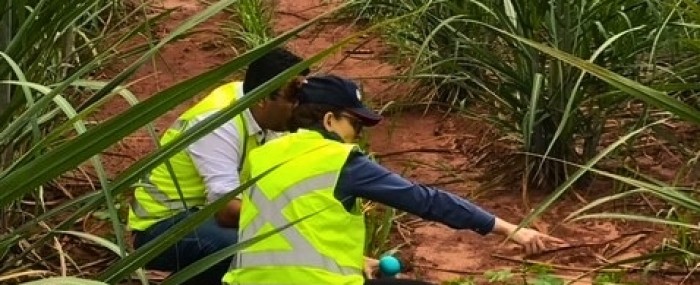
Computational tool processes data to produce predictive analysis for agribusiness
02 de janeiro de 2024By Guilherme Mariano | FAPESP Innovative R&D – Agribusiness is a major driver of economic growth in Brazil. In 2020, the first year of the COVID-19 pandemic, it accounted for 26.6% of gross domestic product (GDP), the total value of all the goods and services produced in the country, according to a survey conducted by researchers affiliated with the Center for Advanced Studies in Applied Economics at the University of São Paulo’s Luiz de Queiroz College of Agriculture (ESALQ-USP) in partnership with the National Confederation of Agriculture (CNA). The sector’s share of GDP was 27.4% in 2021, and it continues to spearhead economic growth despite fluctuations.
The outlook for the years ahead is even more promising, considering that companies are increasingly looking for solutions based on artificial intelligence (AI) to boost performance and productivity, according to specialists.
“The use of AI is transforming agribusiness into a huge data analysis ecosystem,” said Brett Drury, a professor at Liverpool Hope University who conducts research and develops AI-based solutions for the sector.
Drury was responsible for a project conducted by the startup SciCrop to help farmers assess risks and forecast prices of their products using predictive software. The project was supported by FAPESP’s Innovative Research in Small Business Program (PIPE).
The computational tool developed by Drury for agricultural risk assessment analyzes news stories on economic and social factors, time series of growers’ production, satellite imagery and weather reports, among other items, to create a graph-based probabilistic model to generate future scenarios for the price of a given crop, or support farm management decision to mitigate decline of crop yield due to extreme weather events, for instance.
“Based on this tool, SciCrop can use its own data to establish evidence in graphs, or other users can include private information to make inferences about a selected result. Another possible use of the tool is to test hypothetical future situations,” Drury said.
Enriching partnership
The tool uses a probabilistic approach based on Bayesian networks and machine learning, a branch of AI, to condense data and code for the purpose of task automation.
Drury initially wanted to deploy Bayesian networks to help farmers forecast prices of agricultural commodities. “Brett came to us to pitch his research, which he said was highly relevant to what SciCrop was doing. This was true, except that we did basic analytics using information theory and machine learning, while he used Bayesian networks as a data modeling technique,” said Renato Ferraz, a founding partner of SciCrop.
At the time, Drury was looking for a company that was working with unstructured data and information, rather than texts, tables or databases. He and SciCrop conducted experiments using content from Twitter, now known as X. “Brett needed thousands of tweets stored in a database to run his semantic analysis using Bayesian networks, and we had them. That’s how the connection came about,” Ferraz explained.
They achieved positive results in detailing and validation, but the tool was not directly built into SciCrop’s solutions. “He was eventually able to produce forecasts for the agricultural market with the tool, but only for a three-day window, which would be useful for day trading but not for the longer-term forecasting we were interested in,” Ferraz said.
Given this limitation, SciCrop did not launch the tool in Brazil, but the partnership with Drury was enriching and proved fruitful for other solutions, he recalled. One such solution was NotRumor, launched in July 2023. This is an agricultural news aggregation platform that uses AI to select the most relevant content for the client. “NotRumor contains a piece of Brett’s research. Its keyword identification functionality leverages his semantic analysis model [using Bayesian networks],” Ferraz said.
SciCrop now operates in other markets besides agriculture, such as energy, mining and manufacturing. Its clientele includes some 60 major players in these markets, and it was ranked among 100 Startups to Watch by Pequenas Empresas & Grandes Negócios, a magazine about small and medium enterprises.
In 2024, SciCrop plans to expand into the environmental management segment and launch a small satellite that collects data for internal processing.
Drury is in the United Kingdom, where he continues to develop the tool with new partners. “I think the tool is unique. It’s a pity we couldn’t continue developing it in Brazil. I now hope to develop the technology with organizations such as Rothamsted Research [one of the world’s oldest agricultural research institutions]. We’ve applied for about GBP 3 million in funding from the UK government [equivalent to more than BRL 18 million] to develop several types of agricultural technology, including the one I started on at SciCrop,” he said.
